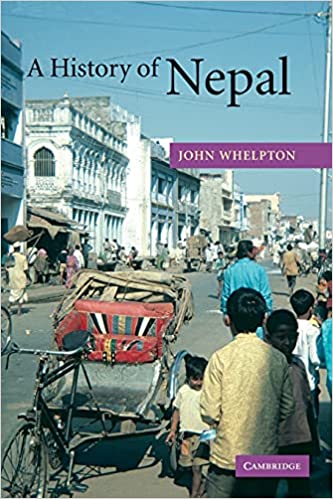John Whelpton, A History of Nepal (2005)
Nepal’s history is complex and fascinating, full of surprising stories, peculiar personalities, and unexpected turns. In A History of Nepal, John Whelpton avoids all that.
Whelpton’s book is a specialist’s book about a nation-state. Environment, prehistory, and everything else through 1753 is done away with in a brief preliminary chapter, and only a little more space is given to the Gorkhali conquests and Rana rule, which lasted until 1951. That’s when the country opened to outsiders, and the remainder of the book reads like a series of UN reports.
Whelpton’s methodology doesn’t help. The period from 1951 tp 1991 is divided into three chapters: domestic politics and foreign relations, economy and environment, and changes in Nepalese society. But of course these things don’t happen in isolation, so we get our picture of modern Nepal in fragments and repetitions, many of them tedious in the extreme. The chapter on politics is exhausting, full of names, parties, and intrigue, but without much in the way of personalities or narratives to help the reader keep track. Or care. In the economy chapter we literally get annual grain yields, and the chapter on social change manages to be highly technical and specific without ever giving a window into anyone’s actual lives. Nepal, in this telling, is a land of politicians and parties, of development projects and economic trends, of demographics and ethnic identities, but not of actual people. Instead, we get sentences like this: “Against this background, Nepal had to negotiate a structural adjustment loan from the World Bank in the mid-1980s, the conditions attached including not only moves towards balancing the budget and reducing the trade deficit but also action on poverty reduction.” It might as well be Bolivia or Burkina Faso.
Whelpton ends with a chapter on democracy and disillusion, having published his book in the unfortunate year of 2005, just before the Maoist insurgency came to an end, the Maoists entered parliament, and the Kingdom of Nepal became a republic.
It’s impressive to write a history of a country so storied and inspiring — home to lamas, Gorkhas, the highest mountains in the world, to rhinos and tigers, to Hindus, to Tantric Buddhists, to adherents of B’on and even older animist traditions, to hippies and freaks and adventurers — and come up with not a single poetic sentence.

